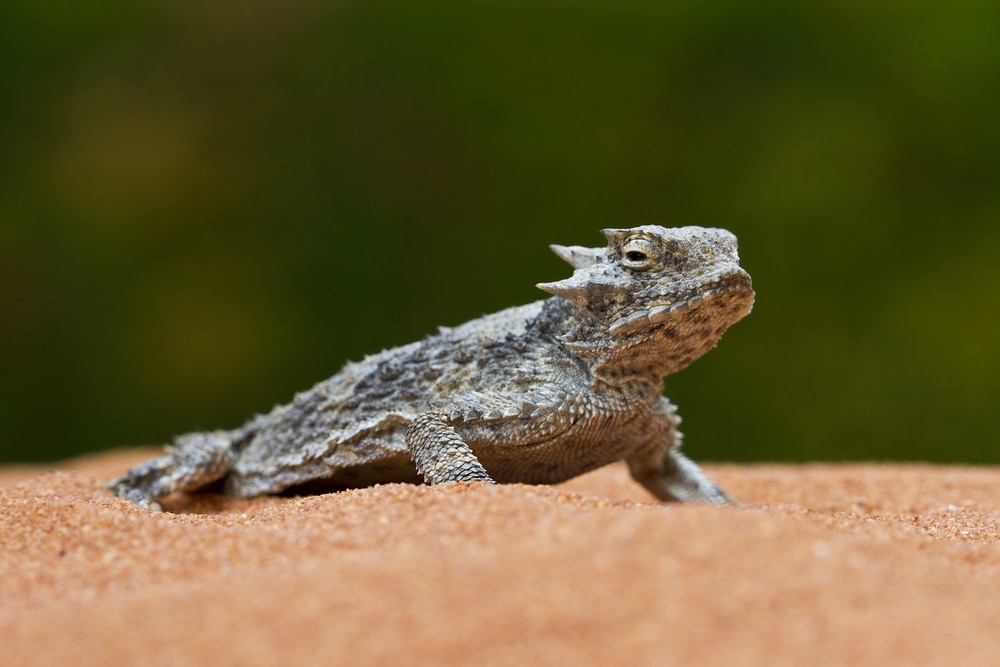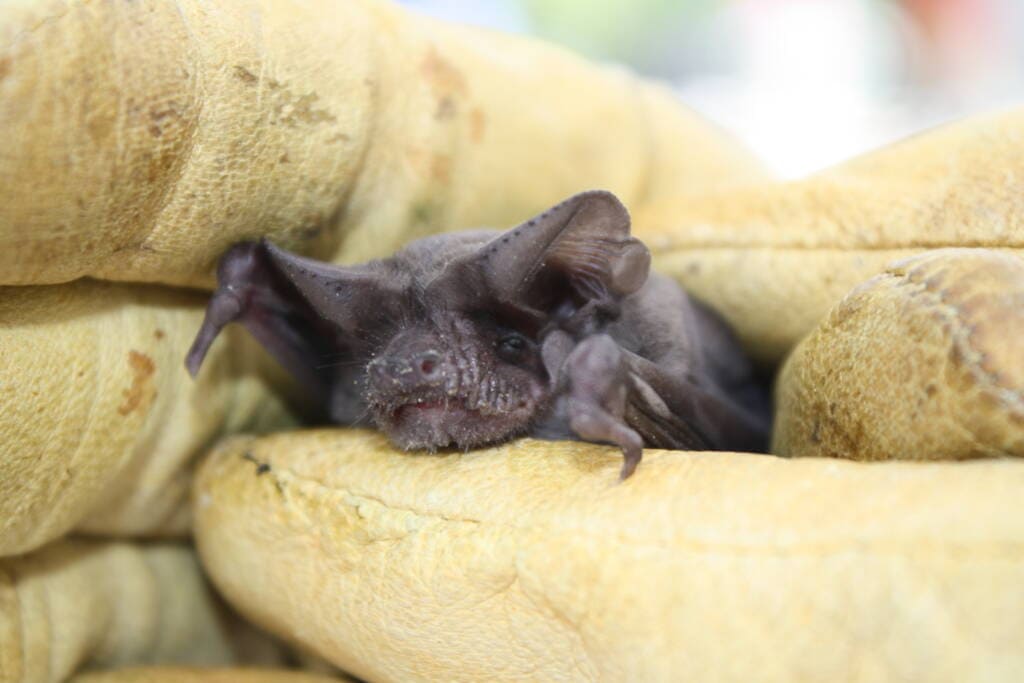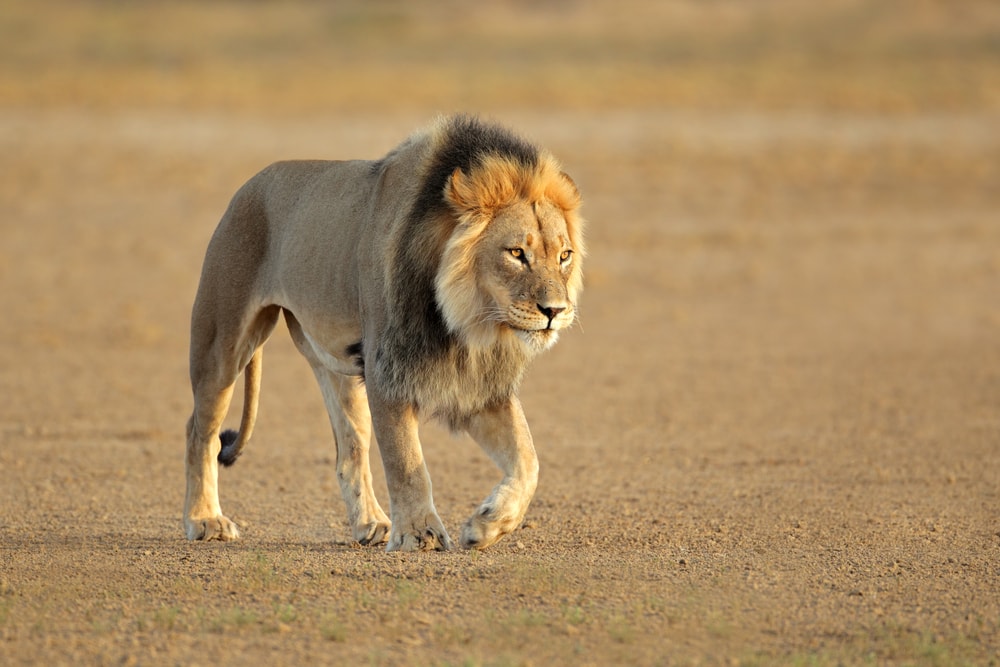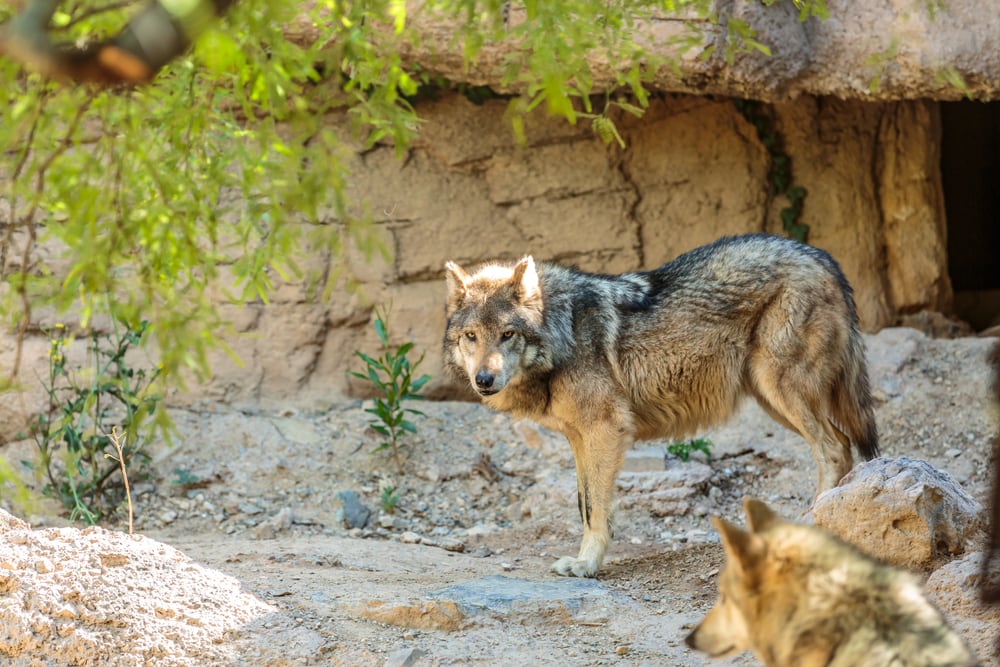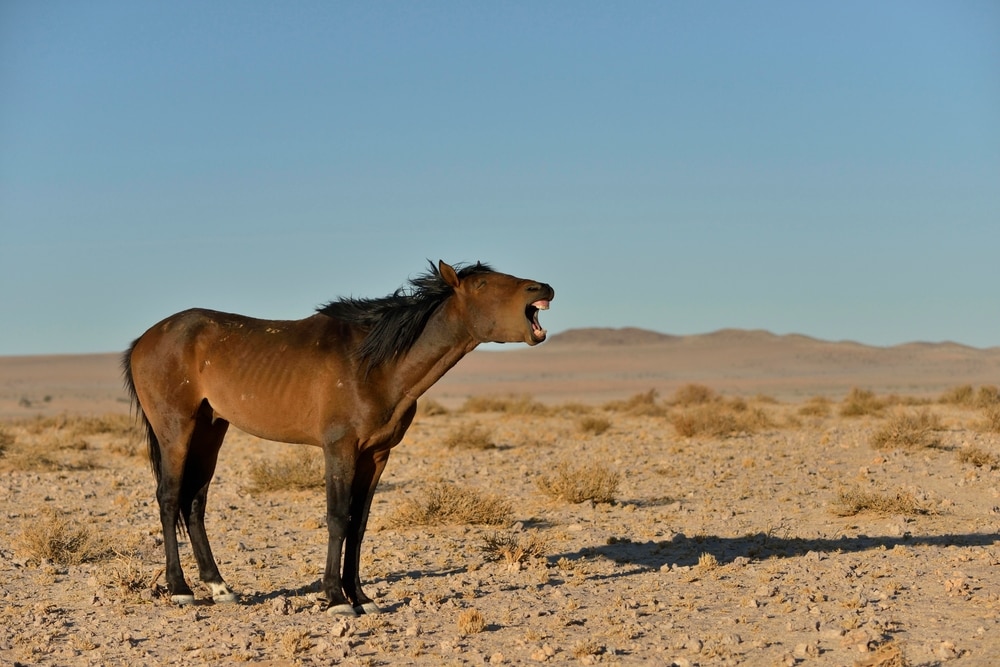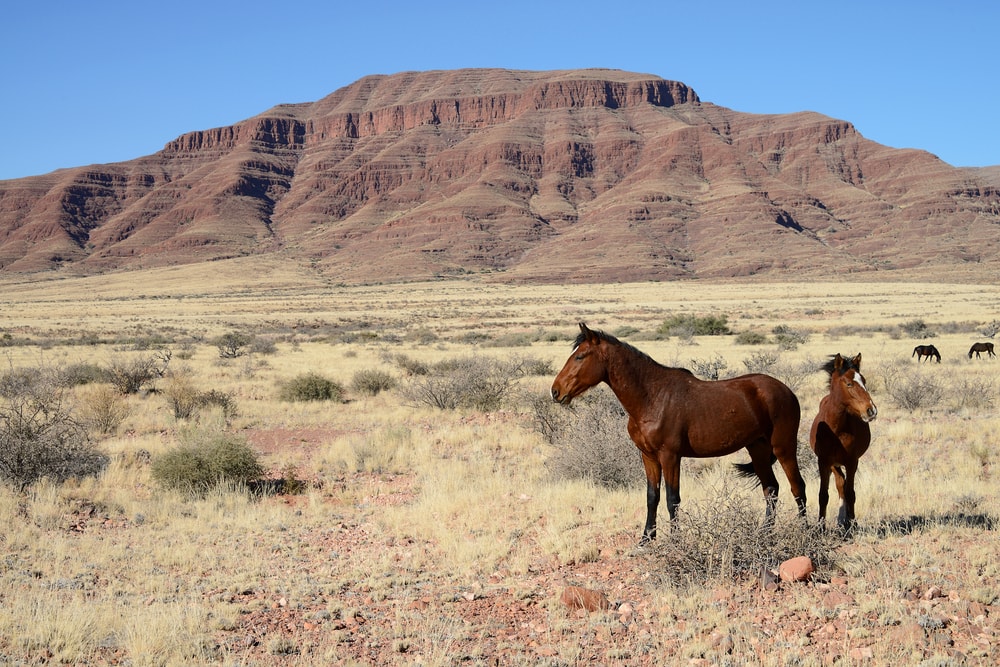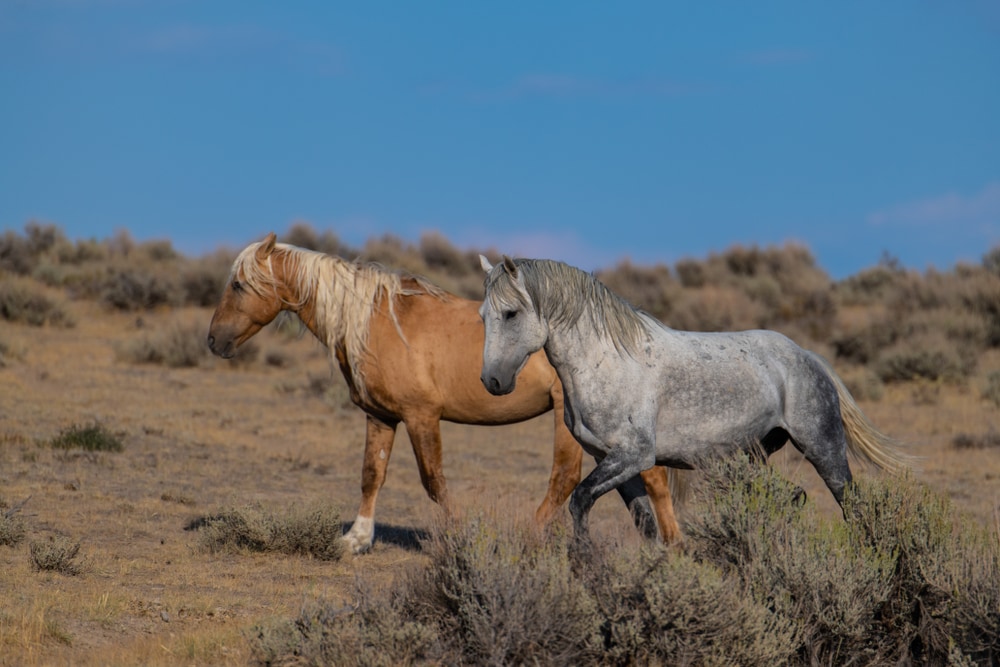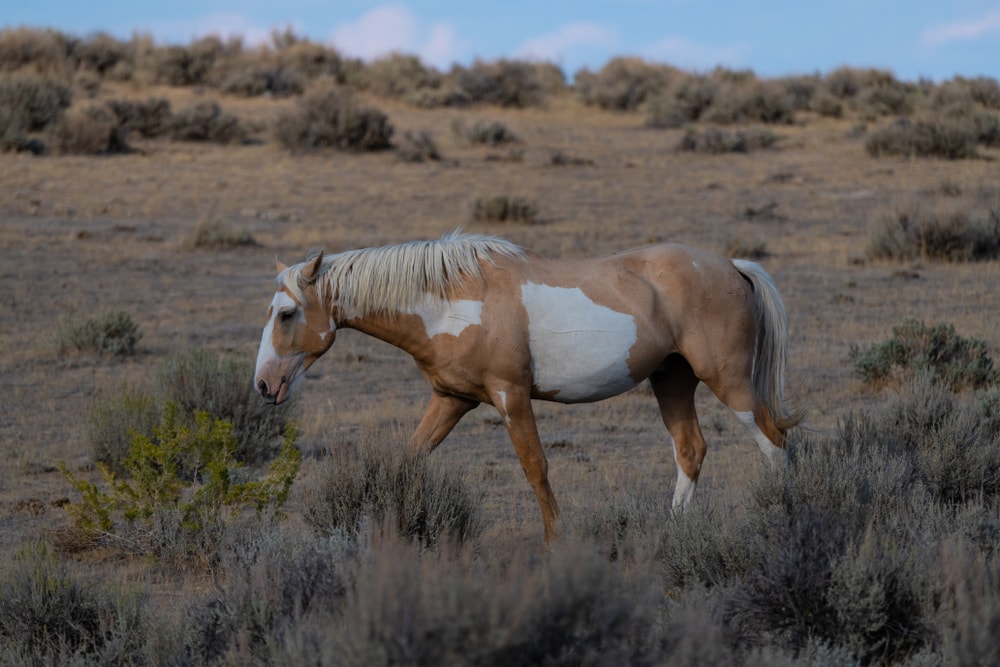Outforia Quicktake: Key Takeaways
- Desert animals have unique adaptations to survive in harsh temperatures and dry conditions.
- Many desert animals can go long periods without drinking water and get most of their water from their diet.
- Deserts around the world are home to various birds, mammals, reptiles, and insects that are well-adapted to their arid environments.
- Some examples of desert animals include snakes, lizards, scorpions, camels, foxes, big cats, and antelopes.
- Desert animals are found in various deserts, such as the Great Basin, Mojave Desert, Sonoran Desert, and Sahara Desert.

Deserts are home to some of the most interesting animals in the world. They’ve adapted to the harsh temperatures and extremely dry conditions of the desert biome.
Virtually all desert animals can go long periods without drinking any water and have special adaptations that make life easier in a desert ecosystem.
What Are Desert Animals?

Desert animals are unique creatures. They’ve adapted to extremely hot temperatures in deserts and can survive long periods with little water.
The climate of a desert biome restricts the amount of vegetation. Deserts experience very hot temperatures above 100 degrees Fahrenheit (37.7 degrees Celsius) in the summer.
During the winter, some deserts reach below-freezing temperatures. Drastic weather changes occur between night and day for some desert ecosystems. Deserts are classified as arid environments that receive an average of no more than 10 inches (25 cm) of precipitation per year.
There are four major North American deserts, most occurring in the western and southwestern United States and Mexico. These deserts include the Great Basin, Mojave Desert, Sonoran Desert, and Chihuahuan Desert.
Other deserts around the world include the Sahara Desert in North Africa, Gobi Desert in southern Mongolia and northwestern China, and the Negev Desert in southern Israel.
Various birds, mammals, reptiles, and insects live in deserts around the world. Follow along to learn about some amazing desert animals and their unique adaptations that allow them to survive the arid biome.

SHARE THIS IMAGE ON YOUR SITE
<a href="https://outforia.com/animals-that-live-in-the-desert/"><img style="width:100%;" src="https://outforia.com/wp-content/uploads/2022/12/animals-that-live-in-the-desert-infographics-1122.jpg"></a><br>animals that live in the desert <a href="https://outforia.com">Outforia</a>Snakes
Many different snake species can withstand harsh desert environments. The western diamond-backed rattlesnake (Crotalus atrox) can be found in deserts throughout the southwest United States and Mexico.
They live in the Mojave, Sonoran, and Chihuahuan Deserts. Their habitats consist of abandoned burrows and small cavities. They can also be found hiding in the shade of desert shrubs or rocks.
One of the most common snakes found in the Sahara Desert in northern Africa is the venomous desert horned viper (Cerastes cerastes). It’s also known as the Saharan horned viper. Snakes in the desert have unique adaptations that allow them to survive in arid environments.
Some desert snakes are most active at night to avoid the hot daytime temperatures. Snakes are cold-blooded creatures. This means they can easily regulate their body temperature by moving into the shade or the sun to keep warm or cool.
Lizards
Lizards are a large group of squamate reptiles closely related to snakes. They appeared on Earth millions of years ago. The desert horned lizard (Phrynosoma platyrhinos) and the collared lizard (Crotaphytus collaris) can be found in deserts of the Southwest.
The desert horned lizard is able to limit its growth and activity to reduce its need for water. This is especially helpful when droughts occur.
Collared lizards are easy to spot because of their vibrant appearance. Males are brightly colored, usually with a teal body and yellow head. Other color variations include brown, tan, and gray.
Many lizards in deserts bury themselves in the sand to keep cool. They also like to bask on rocks to warm up or hide in the shade to cool down.
Lizards are insectivores. In the desert, they feed on different insects. This includes grasshoppers, beetles, and crickets. Some may feed on smaller lizards.
Scorpions

Scorpions live on every continent except Antarctica. They can be found in a wide variety of habitats. Most live in arid or semi-arid regions.
One of the most dangerous scorpions in the US is the Arizona bark scorpion (Centriroides exilicauda). They’re widely distributed in the western and southwestern US. A sting from this scorpion can cause extreme pain, swelling, hypertension, and tachycardia.
The deathstalker scorpion (Leiurus quinquestriatus) is a venomous species that lives in the arid regions of the Middle East and North Africa. Desert scorpions live in burrows that they dig themselves. They also seek shelter in abandoned burrows or under rocks.
Some scorpions are nocturnal and only active at night. Scorpions in the western and southwestern states of the US are commonly found in household sinks, bathtubs, or climbing on walls.
Spiders
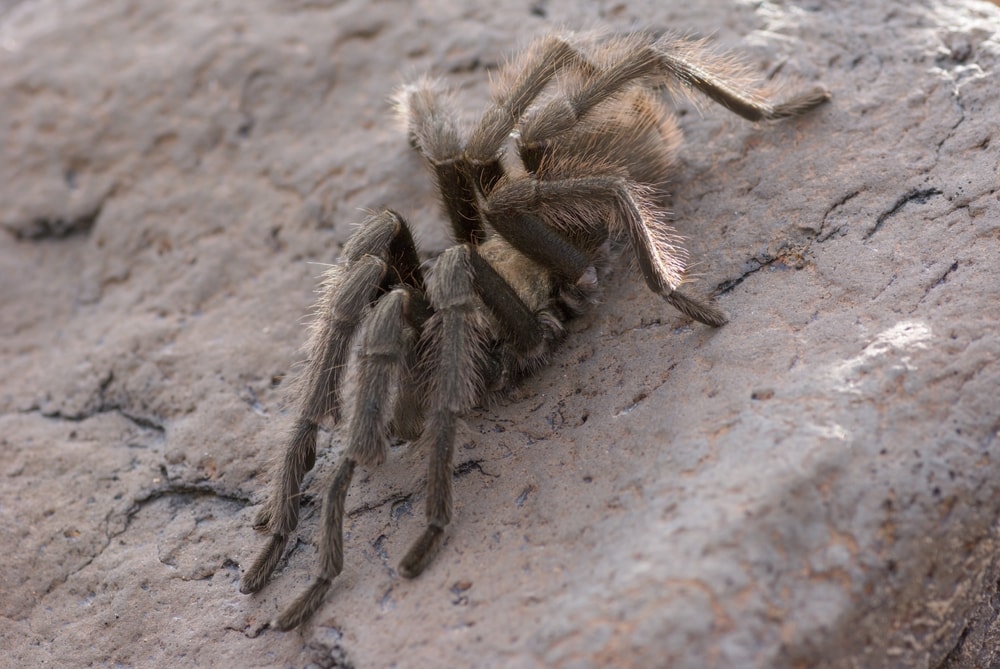
There are more than 50,000 known spider species in the world. Spiders are grouped in the class of arthropods in the arachnid sub-group. They can be found in a wide variety of habitats, including deserts.
One of the largest spiders found in the Sonoran Desert is the giant crab spider (Olios giganteus). These spiders are uniquely named for their long legs. They have an average leg span of about 2 inches (5 cm).
Another spider in the southwest US is the desert tarantula (). Like other tarantula species, these spiders are covered with fine hairs. They can lay up to 1,000 eggs in one brood. Females weave a bed of silk and enclose it to protect the eggs.
Many desert spiders can survive long periods without water. Much of the water they consume comes from their diet of insects. They hide in burrows or under rocks to keep out of the hot sun.
Birds
Desert habitats are home to fascinating bird species that can withstand hot temperatures and limited vegetation. Desert birds can survive with little water by staying in the shade. This helps prevent them from losing water when panting.
Their kidneys don’t excrete much water, which helps with their water reserves. Most of the water desert birds consume comes from insects and fruits they eat.
Black-throated sparrows (Amphispiza bilineata) are native to the Southwest. They have a conical bill made for eating seeds. These birds can stay hydrated from seeds. They can survive without drinking water for long periods.
Birds in the deserts of the southwestern US can often be seen perching on top of cacti and other desert vegetation.
The ostrich is native to Africa and lives in arid and savanna regions. These birds are the largest bird in the world. They can stand as tall as 9 ft (3 cm). Ostriches are also the fastest bird on foot. They can run up to 31 mph!
There are only two living ostrich species in the world. This includes the common ostrich (Stuthio camelus) and the Somali ostrich (Stuthio molybdophenes).
The red-necked ostrich (Struthio camelus camelus) is a subspecies of the common ostrich. They live in the Sahara Desert. They’re critically endangered due to habitat loss, hunting, and egg collection by humans.
Owls can also be found in the desert. The great horned owl (Bubo virginianus) is widespread throughout North America and many parts of South America. Other common habitats include open country, woodlots, and forests.
In the quiet desert nights, the great horned owl can often be identified by their deep hoots.
Deer
Deer (Cervidae) are hoofed ruminant mammals found in various habitats. Some deer, such as the mule deer (Odocoileus hemionus), are able to live in desert environments.
Mule deer live in the western regions of North America. When long droughts occur, they migrate to northern regions to find vegetation. Deer living in the desert feed on a variety of vegetation, such as mesquite leaves, jojoba, and other shrubs.
White-tailed deer (Odocoileus virginianus) can also be found in arid regions of the Southwest and Mexico. They inhabit cactus and thorny brush deserts.
Deer living in deserts have adapted to the harsh temperatures by being active during the early morning hours or at night. They also get most of the nutrients and water they need from their diet.
Bats
Bats belong to the order Chiroptera. They’re the only mammals capable of true flight. They’re most common in temperate regions but can also live in arid environments.
In the desert, bats can be found roosting in caves, tunnels, and abandoned mines. The ghost-faced bat is native to the Southwest. Their range extends into Mexico and other parts of Central America. These bats prefer to live in warmer areas, making deserts the perfect habitat.
Other bats found in the Sonoran Desert include:
- Mexican free-tailed bat (Tadarida brasiliensis)
- Western red bat (Lasirurs blossevillii)
- Cave myotis bat (Myotis velifer)
The desert long-eared bat (Otonycteris hemprichii) can be found in arid regions of North Africa and the Middle East.
Bats live in colonies ranging from 20 individuals to hundreds of thousands of members.
Camels
Camels are perhaps one of the most well-adapted species in desert environments. There are two living species of camels in the world. This includes the dromedary camel (Camelus dromedarius) and the Bactrian camel (Camelus bactrianus).
Dromedary camels can be found in the Sahara Desert. Feral individuals can be found in central Australia. Their native range was South Asia and the Arabian Peninsula.
Dromedary camels are considered a semi-domesticated species. They’re believed to have been domesticated in the Arabian Peninsula as early as the 4th millennium BC.
Bactrian camels live in the Gobi Desert in southern Mongolia, northern China, and the Taklamakan Desert in Northwest China. Bactrian camels are considered critically endangered in the wild. Their domesticated relatives, however, aren’t at risk of endangerment.
Dromedary camels only have one hump, compared to the Bactrian camel, which has two humps. Their humps are a nutritional energy reserve made of fat.
Camels have several unique adaptations that help them survive the dry and sandy conditions of deserts. They have two rows of eyelashes to protect their eyes from sand. The shapes of their feet help them easily travel on the sand.
Camels conserve water by regulating their body temperature, so they don’t sweat. They can tolerate more than 30% water loss. This level of water loss is fatal to most mammals.
Camels can drink up to 100 liters of water in just 10 minutes. Drinking this much water in so little time can also be lethal to other mammals.
Foxes

Foxes belong to the family Canidae. They have a wide range of appearances and live in many different habitats. They can be found in the extreme cold of the arctic or hot desert environments.
One of the most well-known foxes of the desert is the fennec fox (Vulpes zerda). They’re easily recognizable by their large ears. They’re the smallest canid species. Fennec foxes are native to the arid regions of Africa and the Arabian Peninsula.
Desert foxes stay cool by raising their breathing rate and panting. For example, the fennec fox has an average breathing rate of around 23 breaths per minute. When it’s extra hot, their breathing rate can spike up to 690 breaths per minute.
Foxes in the desert feed on small rodents, lizards, insects, and birds. They also steal eggs from birds and other animals. Like most foxes, individuals that live in the desert dig burrows or dens for shelter. Burrows can be super helpful in providing a cool resting place.
Big Cats
From tropical rainforests to deserts, big cats can be found in many parts of the world. Big cats that can be found in desert habitats include:
- African lions (Panthera leo)
- Mountain lions (Puma concolor)
- Bobcats (Lynx rufus)
- Sand cats (Felis margarita)
- Leopards (Panthera pardus)
African lions and leopards can be found in Africa’s arid and semi-arid regions. This includes the Sahara Desert in North Africa and the Kalahari Desert in South Africa.
Mountain lions and bobcats live in the Sonoran Desert of the southwest US. The mountain lion is the largest cat found in this desert.
The sand cat lives in desert regions in North Africa, the Middle East, and Central Asia. Sand cats need very little drinking water to survive. Most of their water comes from their diet of small rodents, birds, and reptiles.
Although not nearly as large as other big cats, this feline is considered the only true desert-dwelling cat. They can withstand temperatures above 100 degrees Fahrenheit (38 degrees C) in the summer and below zero temperatures in the winter.
Antelopes
An antelope is a horned mammal belonging to the family Bovidae. Most antelope species are native to Africa. However, some species live in Asia and the Middle East.
Two antelope species live in the Sahara Desert. This includes the addax antelope (Addax nasomaculatus) and the scimitar-horned oryx (Oryx dammah).
These antelopes used to be widespread throughout the Sahara and Sahel regions. Due to excessive hunting and habitat loss, their range has been significantly reduced to central North Africa.
In the arid and semi-arid regions of central Asia, you can find the saiga antelope (Saiga tatarica). Their population is considered largely depleted. Their current range includes a large area of Kazakhstan and parts of Mongolia, Uzbekistan, and the Russian Federation.
The saiga antelope used to live in China and Ukraine but is now extinct in those regions. It has two spiral-patterned horns and a unique elongated snout.
Desert antelopes feed on grasses and vegetation that’s readily available. The vegetation they eat helps them get all the water they need.
You may also like: 21+ Animals With Horns (and Antlers)
Wolves
Wolves are the largest members of the family Canidae, known as the dog family. They live in a wide variety of habitats, including forests, grasslands, and deserts. They can also be found in rugged mountain terrain, tundra, and taiga biomes.
Two wolf species that live in desert habitats include the Arabian wolf (Canis lupus arabs) and the Mexican gray wolf (canis lupus baileyi).
The Arabian wolf is the smallest of all other wolf species. They live in the Arabian Peninsula, Sinai Peninsula, and the Negev Desert. Mexican gray wolves are a subspecies of the gray wolf. Their historical range included many parts of the southwestern US. It’s now limited to parts of Arizona and New Mexico.
These wolves can survive well in deserts as long as ample food is available. Arabian wolves are very lean and have large ears to help keep them cool.
Wild Horses
Wild horses roam arid and semi-arid regions in the Southwest and the Namib Desert of Namibia. The wild horses in the southwestern states of the US are mustangs. The Namib desert horse roams the sandy deserts of Namibia.
These horses aren’t technically wild because they come from domesticated species. They’re considered feral. Mustangs in the Southwest are descendants of Spanish horses. They were brought to the area around the 15th or 16th century.
Feral mustangs in the Southwest are protected by the Bureau of Land Management. They freely roam 26.9 million acres of protected public lands across 10 western states.
The feral Namib desert horse population is very low. There are only about 90 to 150 individuals. They’re the only feral horses living in Africa.
Horses don’t fare well in extreme desert environments. They’re prone to dehydration and malnutrition during long droughts.
Bees
There are more than 20,000 known bee species buzzing around the world. Bees can vary widely in shape, size, and color. They’re one of the world’s most important pollinators.
There are about 1,000 bee species living in the Sonoran Desert. Some Sonoran desert bee species include:
- Cactus bees (Diadasia rinconis)
- Leafcutter bees (Megachilidae)
- Mason bees (Osmia)
- Africanized bees (Mellifera scutellata)
Most desert bees dig burrows in the ground. Some build their burrows a few inches deep in sandy soils or up to 6 ft (2 m) or more. They pollinate desert plants, such as cacti, bindweeds, and willowherbs.
Africanized bees aren’t native to the Sonoran Desert. They were introduced to Brazil in 1956 and escaped where they were being kept. They formed hybrid populations and traveled up to Central America and the Southwest.
Africanized bees are commonly referred to as killer bees. They’re very aggressive. About 1,000 humans have been killed by Africanized bees since their introduction to Brazil.
Black Bears

The American black bear (Ursus americanus) is the smallest and most widely distributed bear species in North America. Their range used to be all throughout the US but has been limited to about 40 states.
The preferred habitat for black bears is in forests. This is where most black bear populations in the US are found. However, they can also live in swamps and even arid regions.
There are 16 subspecies of American black bears. The New Mexico black bear (Ursus americanus amblyceps) subspecies is common in the Southwest. It resides in parts of the Great Basin Desert.
The cinnamon bear (Ursus americanus cinnamomum) subspecies is unique because it has reddish-brown fur. It’s a common misconception that all black bears have black fur. Some species, especially in the western US, can range from dark to light brown.
Cinnamon bears may be found in the Great Basin Desert for populations that live in southern Idaho or the southwest corner of Wyoming.
Black bears that live in arid or semi-arid environments feed on seeds, insects, and small mammals. Black bears are also common backyard visitors. They often appear close to areas with humans in search of food.
You may also like: Everything You Need to Know About All the Types of Bears
Squirrels
There are more than 200 species of squirrels living around the world. These small to medium-sized rodents belong to the family Sciuridae.
Due to the lack of trees, many squirrels that live in deserts are ground squirrels. Some may still be capable of climbing. However, they have characteristics that help them live life on the ground.
Some examples of ground squirrels that live in the Sonoran Desert include:
- Round-tailed ground squirrels (Spermophilus tereticaudus)
- Harris’s antelope squirrels (Ammospermophilus harrisii)
- Rock squirrels (Spermophilus variegatus)
The round-tailed ground squirrel looks like a prairie dog. They even have similar body language. These squirrels feed on succulent vegetation in deserts, such as cactus flowers and mesquite leaves. They hibernate during the winter.
The Harris’s antelope squirrel closely resembles a chipmunk. It has a white stripe on its side and a black, bushy tail. They like to live in rocky desert habitats. These desert creatures leave behind divots in the sand as they forage for seeds.
Harris’s antelope squirrels are active year-round. They stay cool in summer by seeking shade and spreading out their limbs while on their belly.
Rock squirrels are a large ground squirrel species that share a similar appearance to a tree squirrel. They live in burrows and go dormant in the winter months. They might pop out on warm winter days. Their diet consists of seeds, cacti fruit, insects, and eggs.
You may also like: 12 Types Of Deserts: The Definitive Guide
Desert Animals FAQs

hich animal is the king of the desert?
There are many amazing desert animals that could win the title of “king of the desert.” Some may argue that camels are kings of the desert because of their adaptations. Camels have several fascinating adaptations that help make desert life easy to withstand.
Some may say that the king of the desert is the sand cat. They can go without water for long periods and hear prey under the sand.
Which desert animals store water?
A common misconception is that camels store water in their humps. However, their humps aren’t full of water. They’re an energy reserve filled with fat that provides them nutrients when needed. Other desert animals are capable of storing water.
Gila monsters and desert tortoises can store water in their bladder. This allows them to stay hydrated when they can’t find readily available water sources.
What animal can live without water?
Desert animals that can survive without drinking water include the red-necked ostrich, fennec fox, and addax antelope. These animals will drink water if it’s available. However, most of the water they consume comes from their food.
Do giraffes live in the desert?
Giraffes (Giraffa camelopardalis) can live in desert environments. They’re more common where trees are, including woodlands, savannas, and open plains. Their main habitat is in sub-Saharan Africa. This region is located just south of the Sahara Desert.






